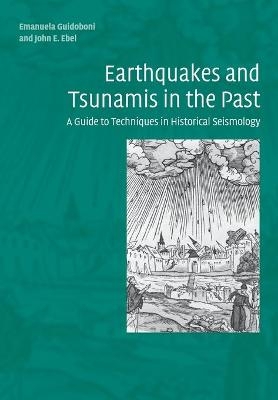
Earthquakes and Tsunamis in the Past
Cambridge University Press (Verlag)
978-1-108-46205-1 (ISBN)
This handbook defines the discipline of historical seismology by detailing the latest research methodologies for studying historical earthquakes and tsunamis. It describes the various sources that reference seismic phenomena, discusses the critical problems of interpreting such sources, and presents a summary of the theories proposed throughout history to explain the causes of earthquakes. Incorporating examples from a broad geographic region, including Europe, North Africa, the Middle East, central Asia, and the Americas, the text presents numerous interpretations and misinterpretations of historical earthquakes and tsunamis in order to illustrate the key techniques. The authors also tie historical seismology research to archaeological investigations, and demonstrate how new scientific databases and catalogues can be compiled from information derived from the methodologies described. This is an important new reference for scientists, engineers, historians and archaeologists, providing a valuable foundation for understanding the Earth's seismic past and potential future seismic hazard.
Emanuela Guidoboni is a senior scientist and head of the historical seismology and volcanology unit at the Istituto Nazionale di Geofisica e Vulcanologia, Bologna, Italy. From 1983 to 2007, she served as director of SGA-Storia Geofisica Ambiente, Bologna, a company specializing in the study of earthquakes and other historical environmental phenomena. A historian by training, Dr Guidoboni is a leading expert in the historical seismicity of the Mediterranean region, and the author of a number of important historical earthquake catalogues and more than 100 scientific publications. John E. Ebel is a Professor in the Department of Geology and Geophysics and Director of the Weston Observatory at Boston College, Massachusetts, where his research interests include theoretical, exploration and earthquake seismology. Professor Ebel was awarded the 2003 Jesuit Seismological Award and the 2004 Service to the Seismological Society of America Award.
Part I. Defining Historical Seismology: 1. What is historical seismology?; 2. The importance of historical earthquake and tsunami data; Part II. Issues Concerning the Interpretation of Historical Earthquake and Ttsunami Data: 3. Written historical sources and their use; 4. Types of scientific sources; 5. Other types of sources; 6. Potential problems in historical records; 7. Determination of historical earthquakes: dates and times; Part III. Practical Guidelines for the Analysis of Historical Earthquake Data: 8. Planning the goals of the analysis of historical earthquakes; 9. Processing historical records; 10. From interpretation of historical records to historical seismic scenarios; 11. Traces of earthquakes in archaeological sites and in monuments; 12. Deriving earthquake source and shaking parameters from historical data; 13. Cooperation in historical seismology research; Index.
| Erscheinungsdatum | 14.03.2018 |
|---|---|
| Zusatzinfo | Worked examples or Exercises; 140 Halftones, unspecified |
| Verlagsort | Cambridge |
| Sprache | englisch |
| Maße | 170 x 245 mm |
| Gewicht | 1060 g |
| Themenwelt | Naturwissenschaften ► Geowissenschaften ► Geologie |
| Naturwissenschaften ► Geowissenschaften ► Geophysik | |
| ISBN-10 | 1-108-46205-7 / 1108462057 |
| ISBN-13 | 978-1-108-46205-1 / 9781108462051 |
| Zustand | Neuware |
| Haben Sie eine Frage zum Produkt? |
aus dem Bereich


